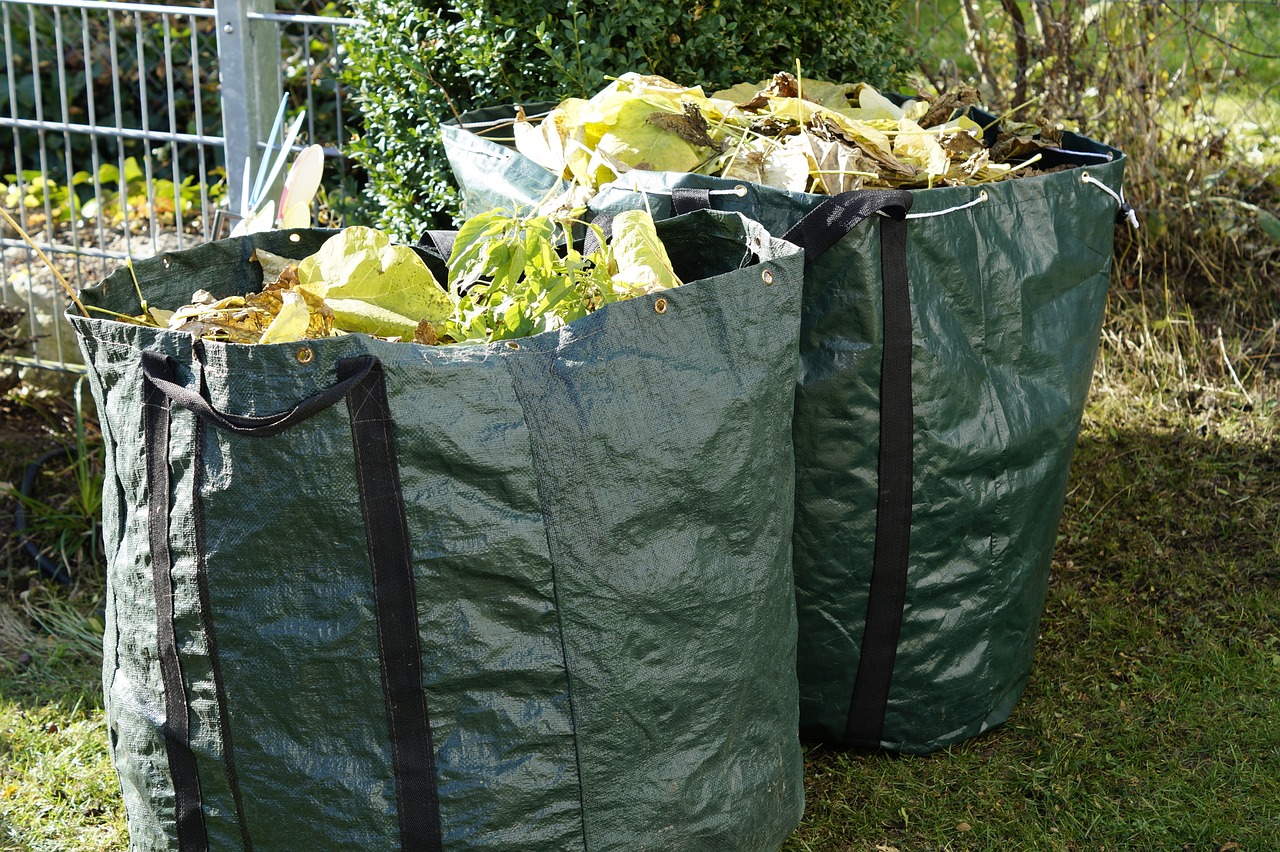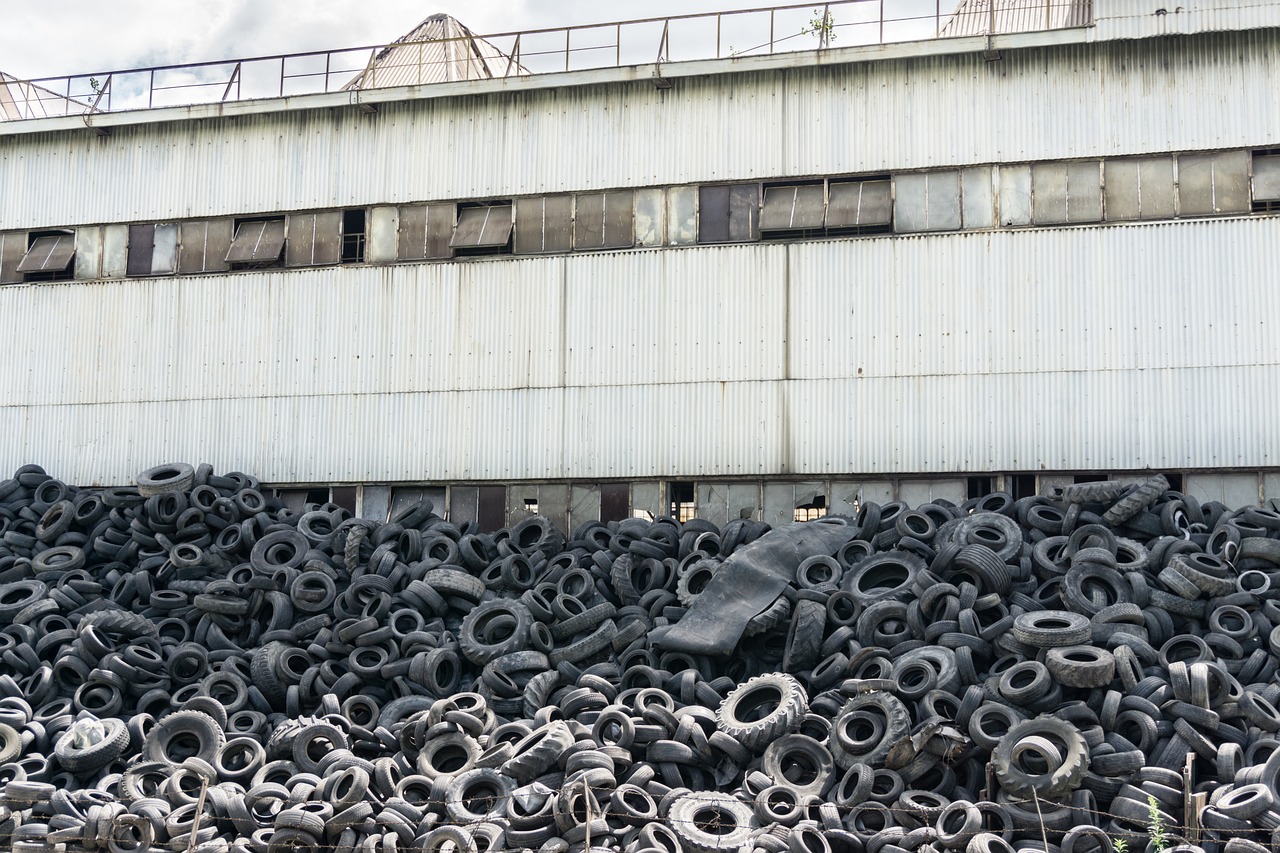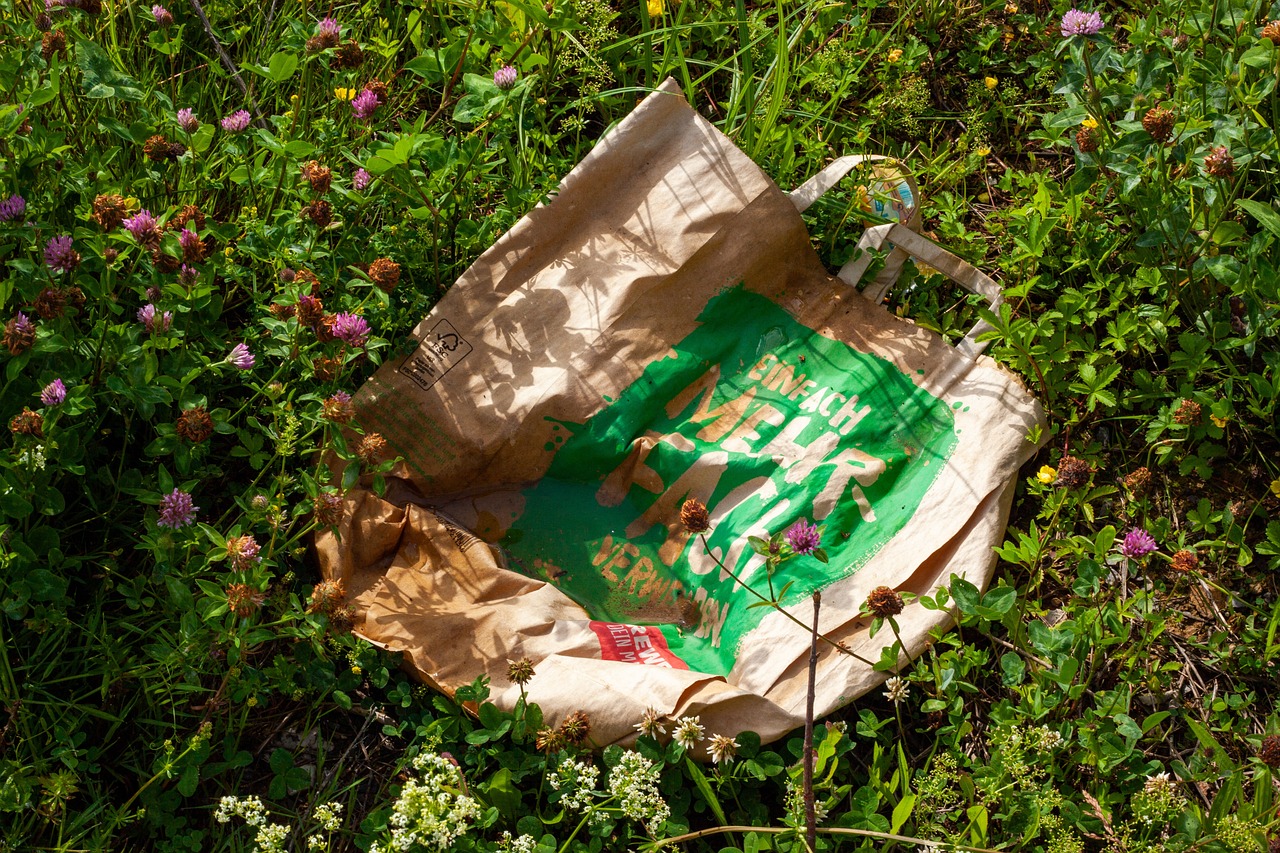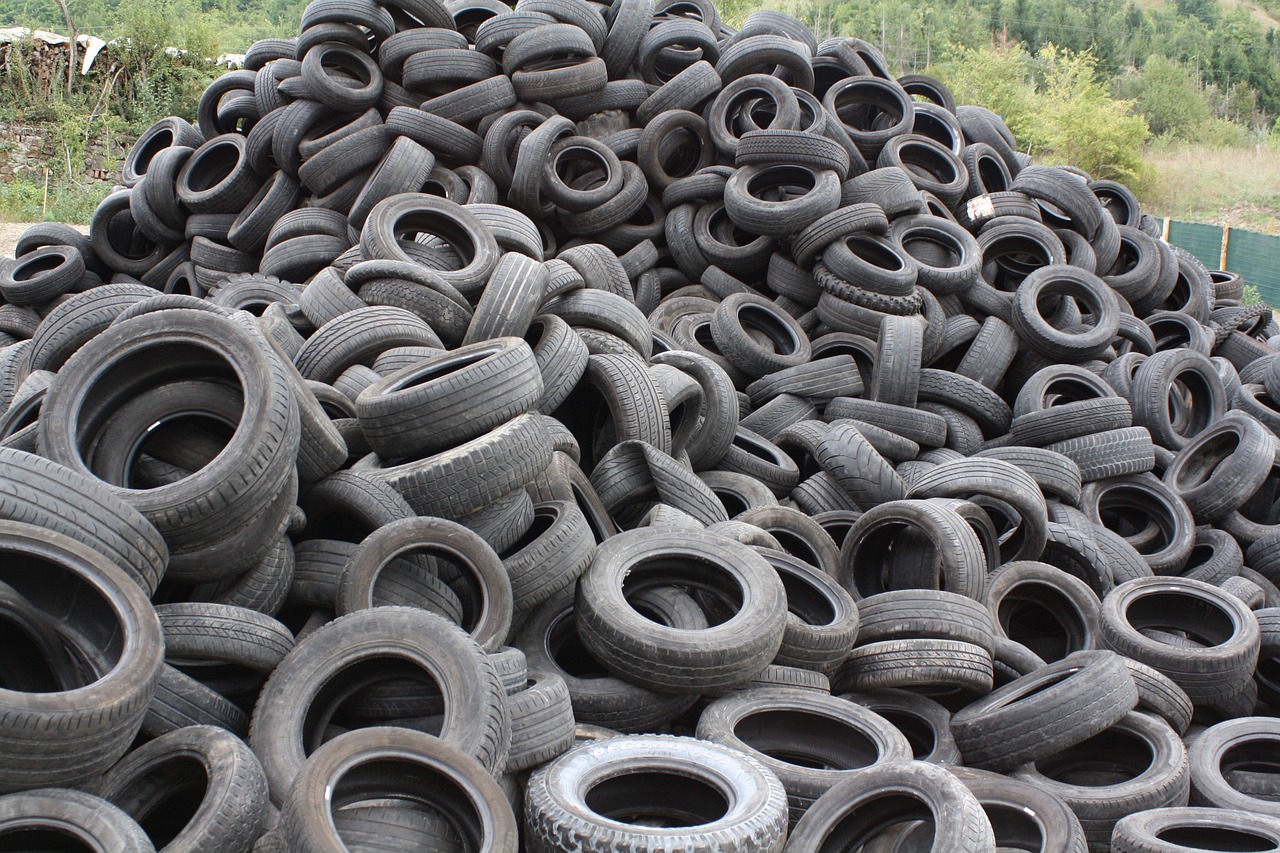In today’s fast-paced world, the amount of waste we generate is staggering. Every day, we toss out food scraps, plastic bottles, and various other materials without giving it a second thought. But have you ever stopped to consider the impact of your waste disposal habits? Waste separation is not just a trendy buzzword; it’s a crucial practice that can significantly affect our environment and future. By separating our waste into different categories—like recyclables, organic waste, and hazardous materials—we can make a tangible difference in reducing landfill waste, conserving natural resources, and minimizing pollution.
Think of waste separation as sorting your laundry. Just as you wouldn’t throw a red shirt in with your whites, mixing different types of waste can lead to disastrous consequences for our planet. When waste is improperly sorted, recyclable materials often end up in landfills, where they contribute to the ever-growing mountain of waste. This not only wastes valuable resources but also leads to increased greenhouse gas emissions. By understanding the significance of waste separation, we can empower ourselves and others to adopt more sustainable habits.
Moreover, waste separation helps in the efficient management of resources. For instance, when we recycle paper, we save trees, reduce energy consumption, and decrease water usage. The process of recycling and composting can significantly cut down on the amount of waste that ends up in landfills. Not to mention, it can also lead to economic benefits by creating jobs in recycling and waste management sectors. So, why is it that many people still overlook the importance of separating their waste? The answer often lies in a lack of awareness and understanding.
In the following sections, we’ll delve deeper into the various types of waste, the benefits of composting, and the challenges we face in promoting effective waste separation. By the end of this article, you’ll not only grasp the importance of waste separation but also feel motivated to take action in your daily life. After all, every little bit counts! Together, we can create a cleaner, greener world for ourselves and future generations. Are you ready to make a difference?

Waste separation is not just a trendy buzzword; it’s a critical practice that can significantly reduce our environmental footprint. Imagine a world where landfills are overflowing, and pollution levels are skyrocketing. By embracing waste separation, we can turn that image around. This practice plays a pivotal role in minimizing the amount of waste that ends up in landfills, which in turn conserves our precious natural resources and reduces pollution levels. When we separate our waste correctly, we’re not only helping our planet but also paving the way for a healthier future.
One of the most significant environmental impacts of waste separation is its ability to reduce landfill waste. Landfills are notorious for emitting harmful greenhouse gases, such as methane, which is a byproduct of decomposing organic materials. By separating organic waste from other types of waste, we can compost it instead, significantly cutting down on these emissions. According to the Environmental Protection Agency (EPA), composting can reduce methane emissions by as much as 50%. Just think about that for a moment—by simply separating your food scraps from your trash, you could be doing your part to combat climate change!
Moreover, waste separation aids in conserving natural resources. When we recycle materials like paper, plastic, and metals, we reduce the need for virgin materials, which often require extensive mining and processing. This not only saves energy but also protects ecosystems from the destructive impacts of resource extraction. For example, recycling aluminum saves up to 95% of the energy required to produce new aluminum from raw materials. That’s a staggering statistic that highlights how a simple act of separating waste can lead to monumental energy savings.
Another environmental benefit of waste separation is its role in minimizing pollution. When waste is not separated, recyclable materials often end up in landfills, where they can leach harmful chemicals into the soil and groundwater. By ensuring that recyclables are processed correctly, we can significantly reduce the risk of soil and water contamination. This is particularly important for hazardous materials, which can pose serious health risks to both humans and wildlife.
To illustrate the impact of waste separation, consider the following table that summarizes the benefits:
| Benefit | Description |
|---|---|
| Reduces Landfill Waste | Minimizes the amount of waste sent to landfills, helping to prevent methane emissions. |
| Conserves Natural Resources | Reduces the need for raw materials, saving energy and protecting ecosystems. |
| Minimizes Pollution | Prevents harmful chemicals from contaminating soil and water supplies. |
| Promotes Sustainable Practices | Encourages communities to adopt eco-friendly habits and behaviors. |
In summary, the environmental impact of waste separation is profound. It’s not just about keeping our surroundings tidy; it’s about creating a sustainable future for generations to come. Each small action we take—like separating our waste—can lead to significant changes in our environment. So, next time you toss something in the trash, take a moment to think about where it will end up and how you can make a difference through waste separation.

When it comes to waste management, understanding the different types of waste is essential for effective separation and disposal. Waste can be broadly categorized into three main types: organic waste, recyclable materials, and hazardous waste. Each category requires specific handling methods to ensure that we minimize environmental impact and promote sustainability. So, what exactly do these categories entail, and why is it crucial to separate them?
Organic waste includes items that are biodegradable, such as food scraps, yard waste, and other materials that can decompose naturally. This type of waste is particularly important because it can be composted, turning it into nutrient-rich soil that can be used in gardens and landscaping. By composting organic waste, we not only reduce the amount of material sent to landfills but also help to enrich the earth, creating a cycle of sustainability.
Recyclable materials encompass a wide range of items, including paper, plastics, metals, and glass. These materials can be processed and transformed into new products, conserving natural resources and reducing energy consumption in the manufacturing process. For example, recycling one ton of paper can save more than 17 trees, not to mention the water and energy used in production. However, it’s vital to ensure that recyclables are clean and free of contaminants, as dirty items can compromise the entire batch.
On the other hand, we have hazardous waste, which includes materials that can pose a risk to human health or the environment. This category includes items like batteries, chemicals, and certain electronic waste. Proper disposal of hazardous waste is critical, as improper handling can lead to serious environmental issues, such as soil and water contamination. Many communities have special collection days or drop-off locations for hazardous materials to ensure they are disposed of safely.
To give you a clearer picture, here’s a simple table summarizing the types of waste:
| Type of Waste | Examples | Disposal Method |
|---|---|---|
| Organic Waste | Food scraps, yard waste | Composting |
| Recyclable Materials | Paper, plastics, metals, glass | Recycling |
| Hazardous Waste | Batteries, chemicals, electronics | Special collection and disposal |
By categorizing waste in this way, we can better understand the importance of proper waste separation. Each type of waste has its own unique challenges and benefits, and recognizing these can empower individuals to make informed decisions about their waste management practices. So next time you toss something in the bin, take a moment to think about which category it belongs to. It might just make a world of difference!

Managing organic waste is not just a trend; it's a necessity in our quest for a sustainable future. Organic waste includes food scraps, yard waste, and other biodegradable materials that, when disposed of improperly, can lead to significant environmental issues. When these materials end up in landfills, they decompose anaerobically, producing methane—a greenhouse gas that is over 25 times more potent than carbon dioxide over a 100-year period. By adopting effective organic waste management practices, we can significantly reduce our ecological footprint while also benefiting our gardens and communities.
One of the simplest yet most effective ways to manage organic waste is through composting. Composting is the process of recycling organic matter, such as food scraps and yard waste, into a valuable fertilizer that can enrich soil. Not only does this practice divert waste from landfills, but it also provides a sustainable source of nutrients for plants. Imagine transforming your kitchen scraps into rich compost that nourishes your garden—it's like giving back to the earth while reducing waste!
There are various composting techniques available, each catering to different lifestyles and needs. Here are a few popular methods:
Each of these methods has its advantages, and the choice often depends on the amount of space you have, the type of waste you generate, and your personal preferences. For instance, if you live in an apartment with limited outdoor space, vermicomposting might be your best bet. On the other hand, if you have a garden, traditional composting could be the most beneficial.
Beyond just waste reduction, composting has a myriad of ecological advantages. It enhances soil health by improving its structure, aeration, and moisture retention. This means healthier plants that require less water and fewer chemical fertilizers. Plus, composting enriches the soil with essential nutrients, creating a thriving ecosystem for beneficial microorganisms. It’s a win-win situation—less waste and more vibrant gardens!
In conclusion, embracing organic waste management through composting not only helps in reducing landfill waste but also contributes to a healthier planet. It’s an empowering practice that allows individuals to take charge of their waste and actively participate in environmental conservation. So, why not start composting today? Your garden (and the planet) will thank you!
1. What can I compost?
You can compost fruit and vegetable scraps, coffee grounds, eggshells, grass clippings, leaves, and small branches. Avoid composting meat, dairy, and oily foods unless using a Bokashi system.
2. How long does it take to compost?
Composting can take anywhere from a few weeks to several months, depending on the method used and the materials being composted. Traditional composting typically takes longer than vermicomposting or Bokashi.
3. Do I need special equipment to compost?
While you can buy compost bins, you can also compost in a simple pile or use a homemade bin made from wood pallets. The key is to ensure proper aeration and moisture levels.
4. Can I compost in winter?
Yes, you can compost in winter! Microbial activity slows down, but composting can still occur. Insulating your compost pile or bin can help maintain heat and encourage decomposition.

Composting is a fantastic way to manage organic waste, and there are several techniques you can employ to make the process efficient and effective. Each method has its own unique benefits, allowing you to choose one that fits your lifestyle and available space. One popular technique is vermicomposting, which utilizes worms to break down organic material. It’s not only a great way to recycle kitchen scraps but also produces nutrient-rich worm castings that can be used to enhance your garden soil. Imagine turning your banana peels and coffee grounds into a goldmine for your plants!
Another effective method is bokashi composting. This technique involves fermenting organic waste using a special mix of microorganisms. It’s a fantastic option for those living in apartments or urban settings where traditional composting might not be feasible. Bokashi allows you to compost meat and dairy products, which are typically not accepted in regular compost piles. You simply layer your food scraps with bokashi bran in a sealed container, and in just a few weeks, you’ll have pre-compost that can be buried in your garden or added to a traditional compost bin.
For those with more space, hot composting is an excellent choice. This method requires a larger compost pile that reaches high temperatures, effectively breaking down organic matter quickly. To get started, you’ll need to gather a mix of “greens” (nitrogen-rich materials like grass clippings and food scraps) and “browns” (carbon-rich materials like dried leaves and cardboard). The ideal ratio is about 3:1 browns to greens. The heat generated by microbial activity in the pile not only speeds up decomposition but also helps kill off pathogens and weed seeds, resulting in a clean, rich compost.
In addition to these methods, you can also consider sheet composting, which is a no-fuss approach where you simply layer organic materials directly onto your garden soil. Over time, the materials break down and enrich the soil without the need for turning or managing a compost pile. This technique is particularly useful for those who want to improve their garden soil without the extra work of traditional composting.
No matter which method you choose, the key to successful composting lies in maintaining the right balance of moisture and aeration. Regularly turning your compost pile or adding air through aeration tubes can help speed up the process. Remember, composting is not just a chore; it’s a rewarding way to contribute to a healthier environment while creating something beneficial for your garden!

Composting is not just a trendy buzzword floating around in eco-friendly circles; it's a powerful tool that can transform the way we think about waste management. When we compost, we take organic waste—like food scraps and yard debris—and turn it into a nutrient-rich soil amendment. This process offers numerous benefits that extend beyond just cleaning up our kitchens and gardens.
First and foremost, composting significantly reduces the amount of waste that ends up in landfills. Did you know that organic materials, such as food waste, make up a whopping 30-40% of what we throw away? By composting, we can divert this waste, thus minimizing the burden on our landfills and extending their lifespan. This not only helps in reducing landfill overflow but also mitigates the production of methane, a greenhouse gas that is released when organic matter decomposes anaerobically in landfills.
But that’s just the tip of the iceberg! Composting enriches the soil, making it a vital ally for gardeners and farmers alike. When you add compost to your garden, you're not just improving soil structure; you're also enhancing its ability to retain moisture and nutrients. This means your plants can thrive without the heavy reliance on chemical fertilizers, which can be harmful to the environment.
Moreover, composting fosters a thriving ecosystem in your garden. It promotes the growth of beneficial microorganisms and earthworms, which play a crucial role in breaking down organic matter and enriching the soil. In essence, composting creates a self-sustaining cycle that benefits both the plants and the environment.
Here are some of the standout benefits of composting:
In addition to these environmental benefits, composting can also save you money. By creating your own compost, you can reduce the need for store-bought fertilizers and soil amendments, which can add up over time. Plus, many municipalities offer discounts on compost bins or even free workshops to help you get started, making it an affordable option for everyone.
Lastly, composting is a fantastic educational opportunity for families. It provides a hands-on way to teach children about sustainability, responsibility, and the natural cycle of life. When kids see the transformation of kitchen scraps into rich compost, they grasp the importance of reducing waste and caring for the environment. It’s a lesson that lasts a lifetime!
In summary, the benefits of composting are multifaceted and impactful. From reducing landfill waste and enhancing soil health to saving money and educating the next generation, composting is a simple yet effective way to make a difference. So why not start composting today? Your garden—and the planet—will thank you!
Q: What can I compost?
A: You can compost fruit and vegetable scraps, coffee grounds, eggshells, grass clippings, leaves, and small branches. Avoid meat, dairy, and oily foods as they can attract pests.
Q: How long does it take for compost to be ready?
A: Depending on the method used, compost can take anywhere from a few weeks to several months to break down into usable soil amendment.
Q: Do I need a special bin to compost?
A: While many people use compost bins, you can also compost in a simple pile in your backyard. Just make sure it’s in a well-drained area and turned regularly.
Q: Can I compost in an apartment?
A: Absolutely! Indoor composting methods like vermicomposting (using worms) or bokashi composting are perfect for small spaces.

Recycling is more than just a trend; it's a vital practice that plays a significant role in conserving our planet's precious resources. Imagine a world where the materials we use can be continuously repurposed, reducing the need for new raw materials. This is the essence of recycling. When we recycle, we not only reduce the amount of waste that ends up in landfills but also save energy, water, and natural resources that are often depleted in the manufacturing process. For instance, recycling one ton of paper can save over 17 trees, 7,000 gallons of water, and 4,100 kilowatts of electricity. Isn't that incredible?
But how does recycling work? The process begins when you separate your recyclable materials from your general waste. This can include items like paper, glass, metals, and certain plastics. Once collected, these materials are taken to recycling facilities where they are sorted, cleaned, and processed into new products. This not only diverts waste from landfills but also reduces the need for new materials to be extracted from the earth, which can have devastating environmental impacts.
To give you a clearer picture, here’s a simple breakdown of the recycling process:
| Step | Description |
|---|---|
| Collection | Recyclables are gathered from homes, businesses, and public spaces. |
| Sorting | Materials are separated based on type (e.g., paper, plastics, metals). |
| Processing | Sorted materials are cleaned and processed into raw materials. |
| Manufacturing | Raw materials are used to create new products. |
| Buying Recycled | Consumers purchase products made from recycled materials, closing the loop. |
By understanding the recycling process, we can appreciate the impact it has on resource conservation. However, it's not just about recycling; it’s also about making informed choices. For example, choosing products made from recycled materials can drive demand and encourage manufacturers to produce more sustainable goods. This creates a positive feedback loop where recycling leads to more recycling.
Moreover, recycling helps reduce greenhouse gas emissions that contribute to climate change. When we recycle, we often use less energy compared to producing new products from virgin materials. This means fewer fossil fuels are burned, resulting in a cleaner environment for future generations. So, every time you toss a recyclable item into the proper bin, you're not just cleaning up your space; you're contributing to a larger movement towards sustainability.
In conclusion, recycling is indeed the key to resource conservation. It’s a simple act that can lead to profound changes in our environment. By adopting recycling as a regular part of our lives, we can all play a role in conserving resources and protecting our planet. So, the next time you finish a drink from a recyclable bottle or read a newspaper, remember that your small actions can lead to big changes. Are you ready to make a difference?

Despite the numerous benefits associated with waste separation, there are significant challenges that hinder its widespread adoption. One of the primary obstacles is public awareness. Many individuals remain unaware of the importance of separating waste and the impact it has on the environment. This lack of knowledge can lead to apathy, where people simply throw everything into one bin without considering the consequences. Imagine trying to bake a cake without knowing the ingredients; it’s likely to end in disaster, much like our planet when we neglect proper waste management.
Another pressing issue is contamination. This occurs when non-recyclable materials are mixed with recyclables, rendering entire batches unsuitable for recycling. For instance, a single pizza box covered in grease can spoil an entire load of paper recycling. The statistics are alarming; according to recent studies, contamination rates can be as high as 25% in some recycling programs. To illustrate, here’s a simple breakdown:
| Type of Waste | Contamination Impact |
|---|---|
| Paper | Greasy or wet items can ruin the recycling process. |
| Plastics | Food residue can lead to lower quality recycled materials. |
| Glass | Non-recyclable items can cause safety hazards during processing. |
To tackle these challenges, communities must implement effective public awareness campaigns. Educating the public about what can and cannot be recycled is crucial. For example, initiatives that provide clear guidelines through workshops, social media, and local events can significantly boost participation rates. Think of it like teaching someone to ride a bike; initial guidance and support make all the difference in building confidence and competence.
Moreover, addressing contamination issues requires a multi-faceted approach. Strategies such as providing clearly labeled bins, conducting regular audits of recycling streams, and offering incentives for proper waste separation can help. Simple actions, like placing stickers on bins that outline what can be recycled, can serve as constant reminders. It’s about creating a culture of awareness where everyone understands their role in waste management.
In conclusion, while the challenges of waste separation may seem daunting, they are not insurmountable. By raising public awareness and minimizing contamination, we can pave the way for a cleaner, more sustainable future. After all, just as a gardener nurtures each plant in their garden, we too must cultivate our habits to ensure a thriving planet.

Public awareness campaigns are pivotal in driving home the importance of waste separation. These initiatives aim to educate communities about the environmental benefits of separating waste and encourage individuals to take proactive steps in their daily lives. Imagine living in a world where every person understands their role in reducing landfill waste and conserving natural resources. This vision can become a reality with effective campaigns that resonate with the public.
One of the most successful strategies employed in these campaigns is the use of relatable messaging. When people can see the direct impact of their actions on the environment, they are more likely to change their habits. For instance, campaigns that illustrate how much waste is generated daily can evoke a sense of responsibility. A striking statistic might be: the average person generates about 4.4 pounds of waste each day. By presenting such facts, campaigns can make waste separation feel more urgent and necessary.
Moreover, engaging visuals and interactive elements can significantly enhance the effectiveness of these campaigns. For example, community events that involve hands-on activities, like sorting waste into different categories, can provide a practical learning experience. These initiatives not only inform but also empower individuals to take action. Incorporating social media platforms into these campaigns has also proven beneficial, as it allows for a broader reach and the ability to engage with younger audiences who are often more active online.
To illustrate the impact of public awareness campaigns, consider the following table showcasing different initiatives and their outcomes:
| Campaign Name | Location | Outcome |
|---|---|---|
| Recycle Right | California, USA | Increased recycling rates by 25% in one year |
| Compost Challenge | Toronto, Canada | Engaged over 10,000 households in composting |
| Waste Warriors | New Zealand | Reduced landfill waste by 30% in participating communities |
These examples highlight the tangible benefits that can arise from well-structured public awareness campaigns. However, it’s essential to tailor these initiatives to the specific needs and characteristics of the community. What works in one area may not necessarily resonate in another, so localizing the message is key. This could involve collaborating with local schools, businesses, and community leaders to create a unified front in promoting waste separation.
In conclusion, public awareness campaigns are not just about spreading information; they are about creating a movement. When communities come together with a shared goal of reducing waste and protecting the environment, the impact can be profound. It’s about fostering a culture of sustainability where everyone plays a part. So, let’s not underestimate the power of awareness—after all, a well-informed community is a powerful one!

Contamination is one of the biggest hurdles we face in the quest for effective waste separation. It occurs when non-recyclable materials are mixed in with recyclable ones, leading to entire batches of recyclables being deemed unusable. Imagine sorting through a beautiful garden only to find weeds choking the flowers; that’s what contamination does to our recycling efforts. To tackle this issue, it’s essential to understand both the causes and the solutions.
One significant factor contributing to contamination is the lack of public knowledge about what can and cannot be recycled. Many people are unsure about the guidelines for their local recycling programs, which can vary widely. For instance, some areas accept pizza boxes while others do not. To combat this confusion, communities should invest in educational initiatives that clearly outline recycling rules. This could include:
Another effective strategy is to enhance the visibility of recycling bins. Often, people will toss items into the nearest bin without checking its contents. By making recycling bins more prominent and clearly labeled, we can encourage better sorting habits. For example, using color-coded bins—green for organics, blue for recyclables, and black for trash—can help individuals quickly identify where their waste should go.
Moreover, implementing community clean-up events can raise awareness about the importance of proper waste separation. These events not only beautify the neighborhood but also serve as a platform for educating participants about contamination issues. By getting hands-on experience, people can learn how to identify recyclable materials and understand the consequences of contamination firsthand.
Finally, technology can play a pivotal role in overcoming contamination issues. Innovations such as smart bins equipped with sensors can help monitor waste disposal habits. These bins can provide real-time feedback to users, indicating whether their disposal choices are correct. By leveraging technology, we can create a more informed and responsible community.
1. What is contamination in recycling?
Contamination in recycling refers to the presence of non-recyclable materials mixed with recyclables, which can lead to entire batches being discarded.
2. How can I reduce contamination in my recycling?
To reduce contamination, familiarize yourself with your local recycling guidelines, use clearly labeled bins, and participate in community education programs.
3. What happens to contaminated recyclables?
Contaminated recyclables are often sent to landfills, as they cannot be processed properly due to the presence of non-recyclable materials.
4. Are there any technologies that help with recycling?
Yes, smart bins with sensors can help monitor waste disposal and provide feedback to users, promoting better recycling practices.
Waste separation is crucial because it helps reduce landfill waste, conserves natural resources, and minimizes pollution. By separating different types of waste, we can ensure that recyclable and compostable materials are processed correctly, leading to a healthier environment.
There are three main types of waste: organic waste, recyclable materials, and hazardous waste. Organic waste includes food scraps and yard waste, recyclable materials consist of paper, plastics, and metals, while hazardous waste includes items like batteries and chemicals that require special disposal methods.
You can manage organic waste by composting it. Techniques like vermicomposting and bokashi are effective ways to turn kitchen scraps and yard waste into nutrient-rich compost that can enhance your garden soil.
Composting diverts waste from landfills, enriches soil health, and reduces the need for chemical fertilizers. It also decreases methane emissions produced by organic waste in landfills, making it a win-win for the environment.
Recycling helps conserve natural resources and reduces energy consumption. By recycling materials, we can decrease the need for new raw materials, which in turn lessens the environmental impact associated with extraction and processing.
Some challenges include a lack of public awareness and contamination of recyclable materials. Many people are unaware of the importance of waste separation, and contamination occurs when non-recyclable items are mixed in, making recycling less efficient.
Public awareness campaigns educate communities about the importance of waste separation and provide practical tips on how to do it effectively. Successful initiatives can significantly increase participation rates and promote more sustainable practices.
To minimize contamination, it's essential to educate individuals about what can and cannot be recycled. Providing clear guidelines and easy-to-understand signage can help ensure that only appropriate materials are placed in recycling bins.